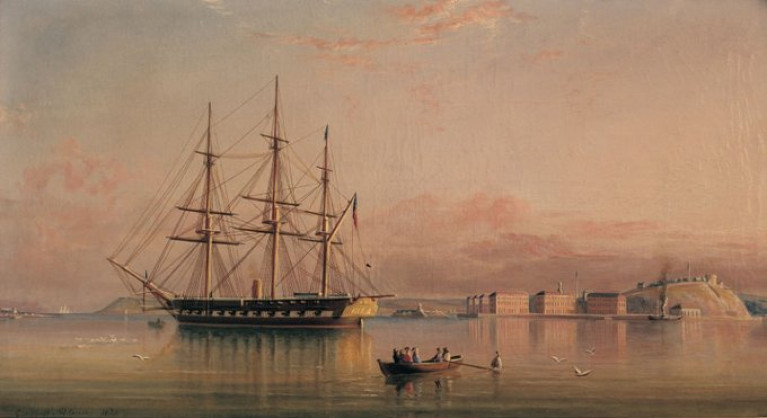Displaying items by tag: Maritime Art Exhibition
An exhibition of paintings from the Port of Cork Collection is set to open in Cork following their donation to the Crawford Art Gallery.
These unique maritime artworks were gifted by the Port of Cork Company in November 2021 are being displayed free to the public since the weekend and for the first time since their acquisition.
Now visitors will have the opportunity to encounter a selection of paintings from the Port of Cork Collection, including works by Irish artists George Mounsey Wheatley Atkinson (1806-1884), Henry Albert Hartland (1840-1893), Robert Lowe Stopford (1813-1898) and Seán Keating (1889-1977).
Curator of the exhibition, Dr Michael Waldron says: “Although not attending to certain social or political realities of late nineteenth-century Ireland, these artworks do act as a visual reminder of that time. They also underscore Cork Harbour’s links with empire, its international significance for commerce and trade, and ever-present story of migration.”
TheCork.ie has more on the exhibition.
Children’s Art Competition Prize Winners Join National Maritime Museum Art Exhibition
#ChildrensArt – As previously reported on Afloat.ie, the Children's Art Competition organised by the National Maritime Museum of Ireland, Dun Laoghaire has been a great success.
The museum thanks all those who participated! It was a hard job for the jury to select the winners from three age categories from which there were more than 600 entries. The museum really wished to have put all the pictures up in the museum, but then there would have been no room for any other exhibits.
To discover who the overall winner is?... take a visit to the museum's website and why not also visit the venue itself!... which is open daily 11am-5pm, for further details also scroll down the same web-page.
All winning pictures are on view in the upstairs gallery. Also previously reported are paintings from the large marine art collection of the Maritime Institute of Ireland where an exhibition is on display until the end of May.
























